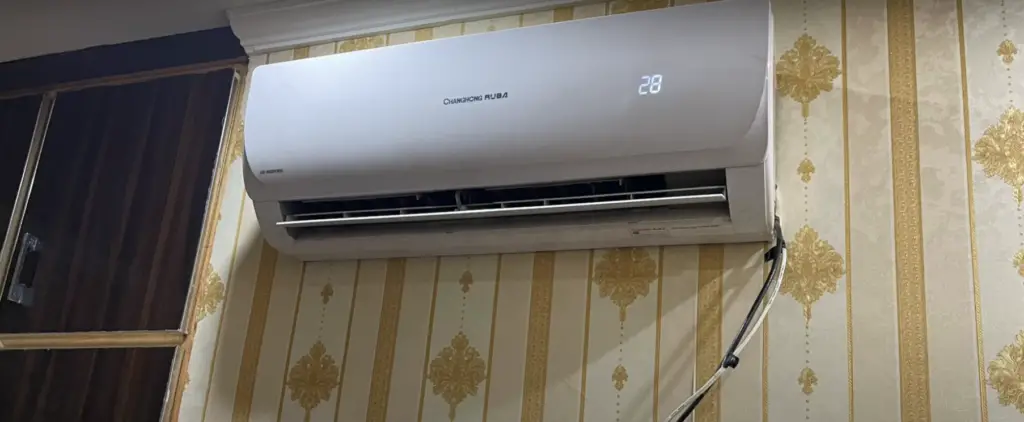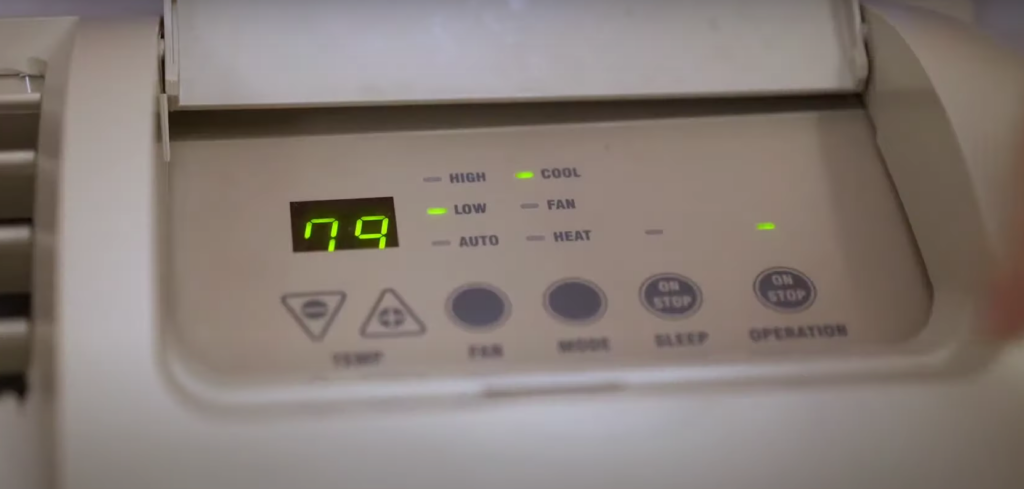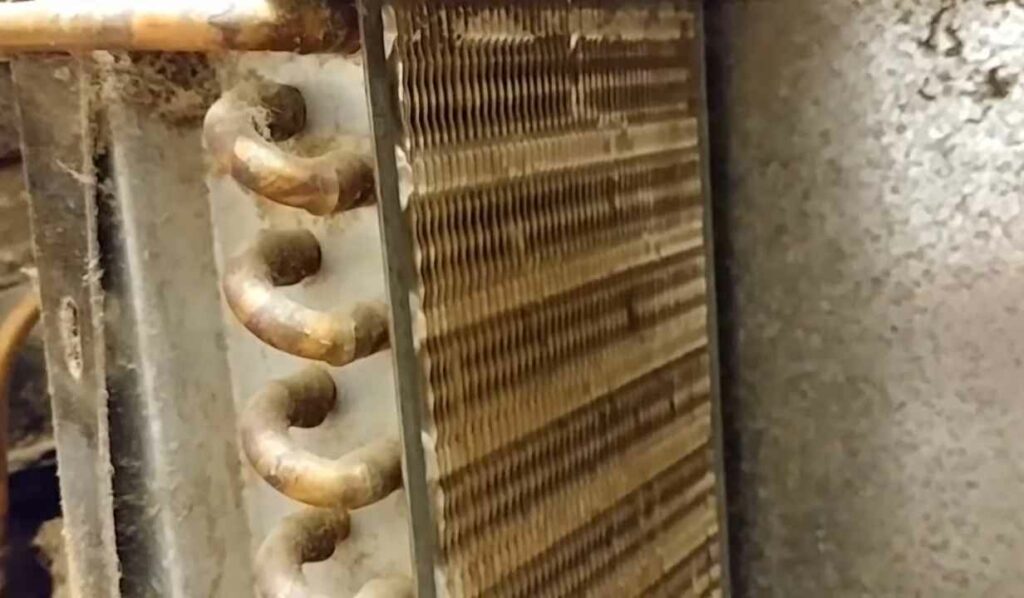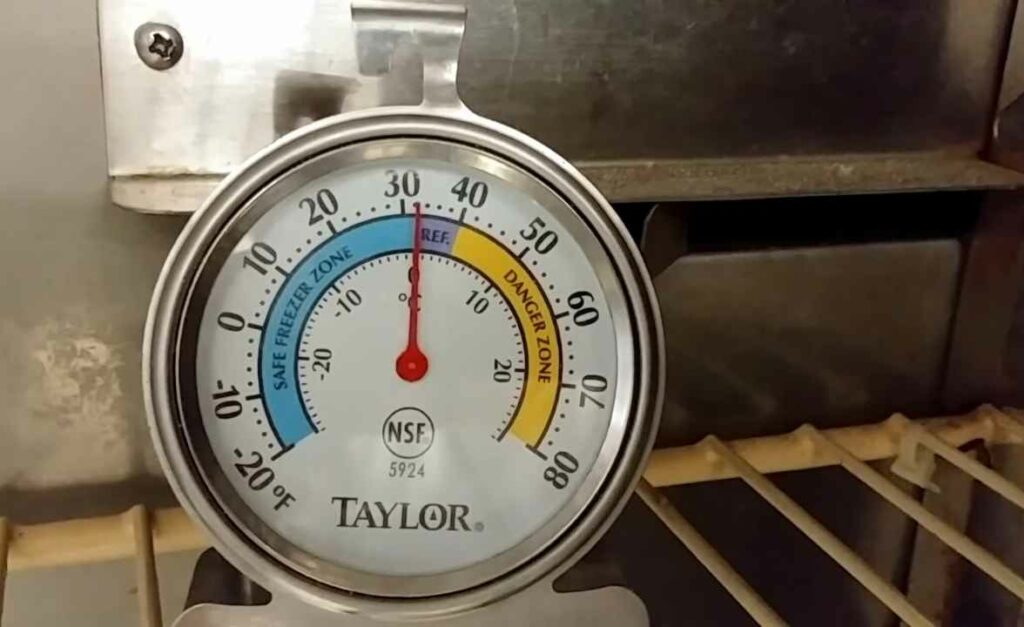In the summer months, it is hard to escape from hot weather conditions, especially in apartments where you may be sharing the same space with many other people.
As such, air conditioners are indispensable. It’s not uncommon for the heat mode on an air conditioner to stop working.
Whether it is a new or old unit, the heat mode switch may stop working. This problem can cause discomfort and damage to the unit.

What Is The Heating Mode In AC?
The heating mode in an AC is a function that allows the AC to heat the room.
It is done by using the AC’s compressor to circulate refrigerant through the AC’s coils.
This refrigerant absorbs heat from the air inside the room and then transfers this heat to the coils of the AC.
This causes the coils to become hot and the surrounding air to become warm.
The AC fan circulates the warm air back into the room.
Reasons – Air conditioner won’t heat
If your air conditioner won’t heat, there are a few potential reasons why.
Below, we’ll explore some of the most common causes and what you can do to fix them.

- Check the Thermostat
One of the most common reasons why an air conditioner won’t heat is because the thermostat is set to the wrong setting.
If your thermostat is set to “cool,” the air conditioner will only blow cool air.
Be sure to check your thermostat and set it to “heat” if you want the air conditioner to generate warmth.
- Inspect the Air Filter
If the air filter is dirty, it can restrict airflow and cause the air conditioner to work less efficiently.
Restricted airflow can cause the air conditioner to overheat, which can trip the safety switch and cause the unit to shut down.
Inspect the air filter and replace it if it is dirty.
- Check for Ice on the Coils
If the coils on the air conditioner are frozen, it won’t be able to generate heat.
Inspect the coils and, if they are frozen, thaw them out with a hairdryer.
Once the coils are thawed, the air conditioner should be able to generate heat properly.
- Check for Refrigerant Leaks
If the air conditioner is low on refrigerant, it won’t be able to generate heat properly.
You’ll need to have a professional recharge the air conditioner with refrigerant.
- Inspect the Blower Motor
If the blower motor is not working properly, the air conditioner won’t be able to generate heat.
Inspect the blower motor and, if it is not working properly, replace it.
- Check for a Dirty Condenser Coil

If the condenser coil is dirty, it won’t be able to dissipate heat properly.
Inspect the coil and clean it if it is dirty.
- Call a Professional
If you’ve tried all of the above and the air conditioner still won’t heat, it’s time to call a professional.
A qualified technician will be able to diagnose and fix the problem.
How to Fix Air Conditioner not Heating
- Check the air filter. The air filter is one of the most essential parts of your air conditioner, and it needs to be clean to work properly. A clogged air filter can reduce the efficiency of your air conditioner and make it work harder than it needs to. Check the air filter monthly and replace it as needed.
- Inspect the outside unit. Take a look at the outside unit of your air conditioner and make sure that nothing is blocking the airflow. Leaves, dirt, and debris can all reduce the efficiency of your air conditioner, so it’s important to keep the area around the unit clean.
- Cover the outside unit. Once the outside unit is clean and clear, it’s time to cover it up. You can purchase a special cover for your air conditioner, or you can simply use a heavy-duty tarp. Be sure to secure the cover so it doesn’t blow away in the wind.
- Set the thermostat. The thermostat is the key to controlling your air conditioner, so it’s important to know how to use it properly. When you want the air conditioner to provide heat, set the thermostat to the “heat” setting. You can also use the thermostat to control the temperature of the air inside your home.
- Adjust the vents. The vents in your home play a big role in controlling the airflow from your air conditioner. By closing the vents in rooms that you aren’t using, you can direct more airflow to the rooms that you are using. This can help make your home more comfortable and reduce energy bills.

By following these simple steps, you can ensure that your air conditioner is ready to provide you with plenty of warmth all winter long.
Frequently Asked Questions
Is it bad to have ac on with heat?
If you have central air conditioning, there’s no need to worry about whether it’s bad to have the AC on while the heat is running.
However, if you have a window air conditioner, you might want to consider turning it off when the heat is on.